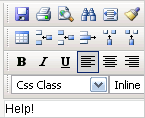 In August 2005 the EU-China information society project (ä¸å›½-欧盟信æ¯ç¤¾ä¼šé¡¹ç›®) was launched. The first initiative of this project is dedicated to improving access to and enhancing the participation of people in electronic government in the People’s Republic of China.
In August 2005 the EU-China information society project (ä¸å›½-欧盟信æ¯ç¤¾ä¼šé¡¹ç›®) was launched. The first initiative of this project is dedicated to improving access to and enhancing the participation of people in electronic government in the People’s Republic of China.
The digital divide in China is closing with computers per capita steadily increasing (for more details see The Digital Divide: Lessons from the People’s Republic of China (PDF) by Jonathan Harrington). China has undertaken massive investments in the ICT sector. It is therefore interesting to see what the Chinese government will do within the area of government policy for public web sites.
Background
The EU-China information society project seeks in particular to assist Chinese government in copyright, telecommunications law and information security issues as well as in access to e-government. The four-year project is cooperatively financed by the European Union and the PRC. Five Chinese cities has been chosen as pilot areas for the project, including Chengdu in southwest China’s Sichuan Province, Yantai in east China’s Shandong and Baotou, the second largest city in north China’s Inner Mongolia Autonomous Region. The project is being implemented by a consortium of the Emerging Markets Group and the German consulting firm GOPA.
Access to government information on the web is relatively new in the PRC. However, a recent report (quoted in an article in People’s Daily Online) said in China, 96.1 percent of government departments at the state level and 81.3 percent of local governments had launched portal websites
.
I have gathered links to 80 government web sites from the Chinese Central Government’s Official Web Portal. These have been checked with the W3C validator to see if headings were used and if they were using the W3C HTML recommendations.
Test disclaimer
Please note that the automated test has only tested the start page of the site. Also, usage of the W3C recommendations is only an indication of accessibility. A site that does not validate may still be more accessible than one that does. I have not tested every site manually and you may find that some of the valid ones have a valid splash page but fail miserably for the rest of the site.
The validation result
The validation result details shows that none of the tested sites use valid HTML. More worrying is that only one site is using headings. A common problem with the tested sites is that encoding has been used incorrectly.
Although tests of other countries have shown similar results (USA: 2.4%, New Zealand: 5.7%) having no valid sites indicates the absence of a central policy for government web communication.
It will be interesting to see if the EU-China information society project can help provide a foundation for the Chinese government to implement web guidelines that will help citizens to access information in a better way.
References
 Web based editing tools are becoming standard issue in modern content managment systems. As more and more organizations discover the advantages of using strucured markup it is important that these editing tools allow editors to markup content without knowledge of HTML. Unfortunately, many of the WYSIWYG-editing tools in use today create invalid markup or do not have the functionality required. Therefore I have selected some web based editing tools and tried to create a sample document in each of them.
Web based editing tools are becoming standard issue in modern content managment systems. As more and more organizations discover the advantages of using strucured markup it is important that these editing tools allow editors to markup content without knowledge of HTML. Unfortunately, many of the WYSIWYG-editing tools in use today create invalid markup or do not have the functionality required. Therefore I have selected some web based editing tools and tried to create a sample document in each of them. In August 2005 the
In August 2005 the